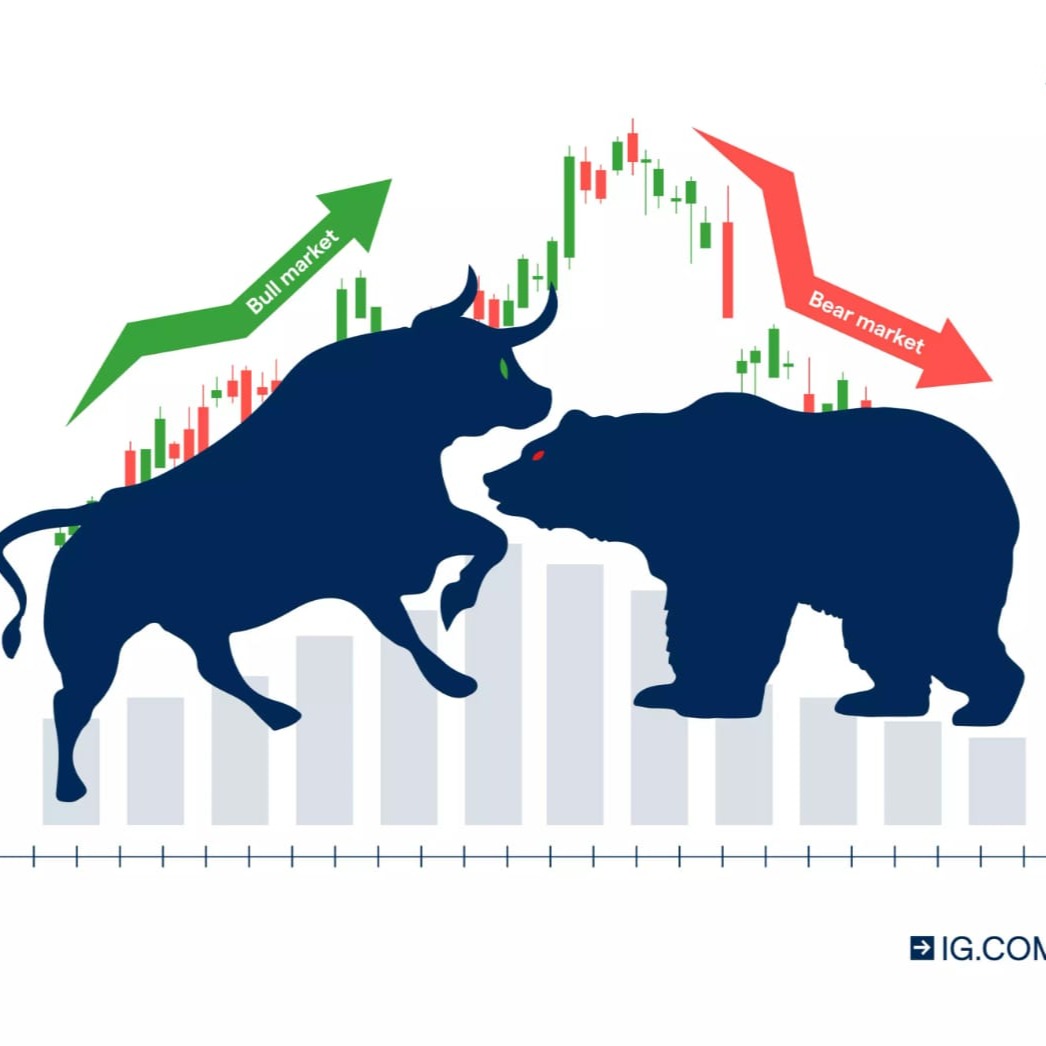Gas價格走勢圖 (TWD/GAS)
最近更新時間 2025-10-19 16:52:59(UTC+0)
GAS/TWD 匯率換算器
GAS
TWD
1 GAS = 80.05 TWD。目前 1 個 Gas(GAS)兌 TWD 的價格為 80.05。匯率僅供參考。
在所有主流交易平台中,Bitget 提供最低的交易手續費。VIP 等級越高,費率越優惠。
今日Gas即時價格TWD
今日 Gas 即時價格為 NT$80.05 TWD,目前市值為 NT$5.20B。過去 24 小時內,Gas 價格漲幅為 2.66%,24 小時交易量為 NT$125.07M。GAS/TWD(Gas 兌換 TWD)兌換率即時更新。
1Gas的新台幣價值是多少?
截至目前,Gas(GAS)的 新台幣 價格為 NT$80.05 TWD。您現在可以用 1 GAS 兌換 NT$80.05,或用 NT$ 10 兌換 0.1249 GAS。在過去 24 小時內,GAS 兌換 TWD 的最高價格為 NT$80.46 TWD,GAS 兌換 TWD 的最低價格為 NT$77.53 TWD。
您認為今天 Gas 價格會上漲還是下跌?
總票數:
上漲
0
下跌
0
投票數據每 24 小時更新一次。它反映了社群對 Gas 的價格趨勢預測,不應被視為投資建議。
Gas 市場資訊
價格表現(24 小時)
24 小時
24 小時最低價 NT$77.5324 小時最高價 NT$80.46
歷史最高價(ATH):
NT$2,986.88
漲跌幅(24 小時):
+2.66%
漲跌幅(7 日):
-1.90%
漲跌幅(1 年):
-40.49%
市值排名:
#200
市值:
NT$5,202,748,311.57
完全稀釋市值:
NT$5,202,748,311.57
24 小時交易額:
NT$125,070,781.75
流通量:
64.99M GAS
最大發行量:
--
Gas (GAS) 簡介
加密货币燃气:简洁而丰富的信息
加密货币行业一直在不断创新和发展。在这个快速变化的领域中,燃气(Gas)是一个广为人知且重要的概念。燃气是与特定加密货币相关的数字资源,用于支付网络上的交易费用。
燃气的概念最早由以太坊引入,它与以太币(Ether)息息相关。燃气是以太坊网络中的计量单位,用于衡量和计算在网络上执行的操作的成本。它确保了在以太坊区块链上进行的每一笔交易和智能合约的顺利执行。
燃气的需求和价格是根据以太坊网络上的交易拥堵程度和计算资源的消耗来决定的。当网络拥塞时,燃气价格可能会上涨,因为用户愿意支付更高的费用以确保他们的交易能够快速处理。反之,当网络较空闲时,燃气价格会下降。
用户需要用燃气来支付他们在以太坊网络上进行的每一笔交易的费用。这包括转账、智能合约的执行和其他与以太坊相关的操作。燃气的支付量与所执行的操作的复杂性和计算需求相关。
可以通过调整燃气价格和支付的燃气数量来影响交易被打包和确认的速度。较高的燃气价格和数量将促使矿工优先处理和确认交易,而较低的燃气费用和数量将导致交易可能需要较长时间来完成。
了解燃气的概念和作用对于加密货币用户至关重要。它提供了一种方式来确保以太坊网络上的交易的有效性和安全性。而在其他加密货币中,可以类比燃气的概念,使用相关的数字资源来支付交易费用。
总之,燃气在加密货币行业中具有重要的地位和作用。它是确保交易有效性和顺利执行的关键要素。理解和掌握燃气的概念将使用户能够更好地使用和交互加密货币网络。
展開
Gas 的 AI 分析報告
今日加密市場熱點查看報告
Gas價格歷史(TWD)
過去一年,Gas價格上漲了 -40.49%。在此期間,GAS兌TWD 的最高價格為 NT$234.81,GAS兌TWD 的最低價格為 NT$53.42。
時間漲跌幅(%) 最低價
最低價 最高價
最高價 
 最低價
最低價 最高價
最高價 
24h+2.66%NT$77.53NT$80.46
7d-1.90%NT$74.77NT$87.08
30d-20.11%NT$53.42NT$100.72
90d-26.09%NT$53.42NT$126.3
1y-40.49%NT$53.42NT$234.81
全部時間+46.99%NT$18.35(2020-03-13, 5 年前)NT$2,986.88(2018-01-15, 7 年前)
Gas的最高價格是多少?
GAS兌換TWD的歷史最高價(ATH)為 NT$2,986.88,發生於 2018-01-15。相較於價格回撤了 Gas。
Gas的最低價格是多少?
GAS兌換TWD的歷史最低價(ATL)為 NT$18.35,發生於 2020-03-13。相較於GAS歷史最低價,目前GAS價格上漲了 Gas。
Gas價格預測
什麼時候是購買 GAS 的好時機? 我現在應該買入還是賣出 GAS?
在決定買入還是賣出 GAS 時,您必須先考慮自己的交易策略。長期交易者和短期交易者的交易活動也會有所不同。Bitget GAS 技術分析 可以提供您交易參考。
根據 GAS 4 小時技術分析,交易訊號為 中立。
根據 GAS 1 日技術分析,交易訊號為 賣出。
根據 GAS 1 週技術分析,交易訊號為 強力賣出。
GAS 在 2026 的價格是多少?
2026 年,基於 +5% 的預測年增長率,Gas(GAS)價格預計將達到 NT$84.16。基於此預測,投資並持有 Gas 至 2026 年底的累計投資回報率將達到 +5%。更多詳情,請參考2025 年、2026 年及 2030 - 2050 年 Gas 價格預測。GAS 在 2030 年的價格是多少?
2030 年,基於 +5% 的預測年增長率,Gas(GAS)價格預計將達到 NT$102.3。基於此預測,投資並持有 Gas 至 2030 年底的累計投資回報率將達到 27.63%。更多詳情,請參考2025 年、2026 年及 2030 - 2050 年 Gas 價格預測。
熱門活動
全球Gas價格
目前Gas用其他貨幣計價是多少?最近更新時間:2025-10-19 16:52:59(UTC+0)
GAS 兌換 ARS
Argentine Peso
ARS$3,683.62GAS 兌換 CNYChinese Yuan
¥18.54GAS 兌換 RUBRussian Ruble
₽212.76GAS 兌換 USDUnited States Dollar
$2.61GAS 兌換 EUREuro
€2.24GAS 兌換 CADCanadian Dollar
C$3.66GAS 兌換 PKRPakistani Rupee
₨741.94GAS 兌換 SARSaudi Riyal
ر.س9.8GAS 兌換 INRIndian Rupee
₹230GAS 兌換 JPYJapanese Yen
¥393.52GAS 兌換 GBPBritish Pound Sterling
£1.95GAS 兌換 BRLBrazilian Real
R$14.13如何購買Gas(GAS)

建立您的免費 Bitget 帳戶
使用您的電子郵件地址/手機號碼在 Bitget 註冊,並建立強大的密碼以確保您的帳戶安全

認證您的帳戶
輸入您的個人資訊並上傳有效的身份照片進行身份認證

將 GAS 兌換為 TWD
在 Bitget 上選擇加密貨幣進行交易。
常見問題
Gas 的目前價格是多少?
Gas 的即時價格為 NT$80.05(GAS/TWD),目前市值為 NT$5,202,748,311.57 TWD。由於加密貨幣市場全天候不間斷交易,Gas 的價格經常波動。您可以在 Bitget 上查看 Gas 的市場價格及其歷史數據。
Gas 的 24 小時交易量是多少?
在最近 24 小時內,Gas 的交易量為 NT$125.07M。
Gas 的歷史最高價是多少?
Gas 的歷史最高價是 NT$2,986.88。這個歷史最高價是 Gas 自推出以來的最高價。
我可以在 Bitget 上購買 Gas 嗎?
可以,Gas 目前在 Bitget 的中心化交易平台上可用。如需更詳細的說明,請查看我們很有幫助的 如何購買 gas 指南。
我可以透過投資 Gas 獲得穩定的收入嗎?
當然,Bitget 推出了一個 機器人交易平台,其提供智能交易機器人,可以自動執行您的交易,幫您賺取收益。
我在哪裡能以最低的費用購買 Gas?
Bitget提供行業領先的交易費用和市場深度,以確保交易者能够從投資中獲利。 您可通過 Bitget 交易所交易。
相關加密貨幣價格
Solana 價格(TWD)WINkLink 價格(TWD)Litecoin 價格(TWD)Bitcoin 價格(TWD)Fartcoin 價格(TWD)Pi 價格(TWD)Toncoin 價格(TWD)Bonk 價格(TWD)Cardano 價格(TWD)Pepe 價格(TWD)Dogecoin 價格(TWD)Shiba Inu 價格(TWD)Terra 價格(TWD)Smooth Love Potion 價格(TWD)Kaspa 價格(TWD)dogwifhat 價格(TWD)Worldcoin 價格(TWD)Ethereum 價格(TWD)OFFICIAL TRUMP 價格(TWD)XRP 價格(TWD)
您可以在哪裡購買Gas(GAS)?
影片部分 - 快速認證、快速交易

如何在 Bitget 完成身分認證以防範詐騙
1. 登入您的 Bitget 帳戶。
2. 如果您是 Bitget 的新用戶,請觀看我們的教學,以了解如何建立帳戶。
3. 將滑鼠移到您的個人頭像上,點擊「未認證」,然後點擊「認證」。
4. 選擇您簽發的國家或地區和證件類型,然後根據指示進行操作。
5. 根據您的偏好,選擇「手機認證」或「電腦認證」。
6. 填寫您的詳細資訊,提交身分證影本,並拍攝一張自拍照。
7. 提交申請後,身分認證就完成了!
1 TWD 即可購買 Gas
新用戶可獲得價值 6,200 USDT 的迎新大禮包
立即購買 Gas
加密貨幣投資(包括透過 Bitget 線上購買 Gas)具有市場風險。Bitget 為您提供購買 Gas 的簡便方式,並且盡最大努力讓用戶充分了解我們在交易所提供的每種加密貨幣。但是,我們不對您購買 Gas 可能產生的結果負責。此頁面和其包含的任何資訊均不代表對任何特定加密貨幣的背書認可,任何價格數據均採集自公開互聯網,不被視為來自Bitget的買賣要約。
GAS/TWD 匯率換算器
GAS
TWD
1 GAS = 80.05 TWD。目前 1 個 Gas(GAS)兌 TWD 的價格為 80.05。匯率僅供參考。
在所有主流交易平台中,Bitget 提供最低的交易手續費。VIP 等級越高,費率越優惠。
Bitget 觀點

CRYPTOHEIGHTS
2025/09/18 06:41
🚨 Hidden Danger: This Rate Cut Could Trigger a $BTC Bloodbath 🩸
BIG RATE CUT MANIPULATION IS PLANNED
99% expect a strong GROWTH – whales think otherwise...
Spending 30 hours analyzing market data, I was shocked
Here’s market reaction to rate cuts and $BTC’s future
Before we start
I've poured hours of research into this and I'm sharing top-notch alpha content for FREE. Like, repost, and FOLLOW me
꩜ Today a key event will happen that has been awaited for more than 10 months...
֍ On September 17, Fed Chairman Jerome Powell will announce the decision on the US interest rate
֍ A record liquidity injection is expected, but it’s not that simple...
- Rate cut → cheap credit
- Cheap credit → liquidity growth
- Liquidity growth → capital flows into risk assets, including crypto
꩜ For the long term, this is a strong plus = global growth
꩜ But in the short term, the market expects a hit that few are ready for
꩜ Rate cut in the short term = $BTC drop
꩜ Why so?
➤ Signal of economic weakness → money runs from risky assets
➤ Players take profits → pressure grows, market dumps
➤ Dollar gets a temporary boost → $BTC under pressure
꩜ The market is overheated – a rate cut almost guarantees a dip.
꩜ What’s next?
- $BTC drops to ~$104k → bounce up.
- Deeper drop to ~$92k → then reversal and new ATH
꩜ But don’t think it ends with just the cut...
꩜ This already happened in 2020...
꩜ In March 2020, Fed cut rates to near 0% and launched QE, yet COVID panic sent $BTC down ~50% in a day
꩜ Soon after, Fed liquidity fueled risk assets and by year-end Bitcoin broke $20k.
꩜ In 2021, the rally continued with $BTC at $64k and ALTs delivering massive gains
꩜ The market may again dip to key support zones.
꩜ The main direction is one – a strong long that will happen soon
꩜ When $BTC makes a small pullback – the best chance to buy ALTs at ~40-50% discount
꩜ Traditionally in Q4, $BTC shows strong growth – and this year repeats the scenario
꩜ Rate cut – a rare event giving a chance to change your life.
꩜ Now is the best time to buy ALTs before the biggest liquidity injection into the market
꩜ After analyzing ~700 alts, I picked the top 5 before the BLAST
꩜ @Somnia Official / $SOMI
꩜ Somnia is a high-performance Layer-1 designed for the open metaverse, built to handle millions of TPS with low latency
꩜ It supports real-time virtual worlds, digital asset economies, and scalable AI-driven applications
꩜ Market Cap: ≈ $223M #Somnia
❖ $WCT | @WalletConnect
❖ Market Cap: ≈ $57.1-$58.8 million
❖ Price: ≈ $0.307-$0.315
❖ Circulating Supply: ~ 186.2 million WCT (≈ 18-19% of total 1 billion max supply)
❖ Fully Diluted Valuation (FDV): ~ $310M
Key Features & Updates
WCT is the native utility & governance token for the WalletConnect Network. It supports staking, governance, rewards, fees (future), and secures network services.
Part of the token’s utility is tied to network services like wallet-to-dApp connections. Rewards are distributed to stakeholders, node operators, and participants who contribute to UX & system reliability.
꩜ @SkaleNetwork / $SKL
꩜ SKALE - blockchain for dApps with zero gas fees, high performance and infinite scalability
꩜ SKALE - network of EVM-compatible Layer 1 blockchains called SKALE Chains
꩜ Market CAP: $166.27M
❖ $BB | @BounceBit
❖ Market Cap: ≈ US$125-130M
❖ Fully Diluted Valuation (FDV): ≈ US$345-$350M
❖ Circulating Supply: ~ 792 million BB / Max Supply: 2.1 billion BB (~38% circulating)
❖ Current Price: ~ US$0.144-$0.165 depending on exchange/time
❖ All-Time High (ATH): ≈ $0.87 (June 2024) — currently down ~80-83% from that peak
❖ All-Time Low (ATL): ≈ $0.0735 (June 2025) — current price is several multiples above that bottom
BTC+1.37%
ALPHA+2.03%

Christian (Building @0xinfini)
2025/09/18 05:50
Stage 0的时候顺手存了点,当时@Aster_DEX 积分的top10地址里有四个是我的,后来一期一期的出,本来以为自己被稀释干净了,昨天听说币发出来了,还懒的看,觉得估计也就是个gas fee,刚才一登录发现加起来能领一百万个。
大毛总是在没有任何期待的情况下到来,正如当年的$usual.
祝Aster早日比肩HL
GAS+2.42%
USUAL+3.50%

Jahanzaib_Gondal
2025/09/18 04:25
$ZKC: Game Time. Analyzing the New $ZKC Power on Bitget.
Subtitle: The buzzer beater has sounded. $ZKC the native token for the elite zkSync ecosystem, is now live for trading on Bitget. We break down the pre-game analysis and the potential plays ahead.
Let's get straight to the scouting report.
The Player: Who is $ZKC?
$ZKC isn't just another name on the roster. It's the utility token for zkSync Era, a top-tier Layer-2 blockchain using advanced zero-knowledge (ZK) proofs to scale Ethereum. Think of it as the fuel and the franchise player for a faster, cheaper Ethereum experience.
· Position: Utility Token / Ecosystem Driver
· Key Stats: Powers network security, pays gas fees via account abstraction, and governs the future of the zkSync protocol.
· Draft Position: Highly touted prospect with a strong technical foundation.
The Market: First Quarter Analysis
The opening minutes of a new listing are all about volatility and momentum. $ZKC is hitting the court with a few key advantages:
· Strong Bench (Ecosystem): zkSync isn't a rookie. It has a deep bench of DeFi apps, NFTs, and users already playing on its network. This isn't a build-from-scratch project.
· Crowd Hype (Demand): Launching on a major exchange like Bitget provides instant liquidity and access to a global audience of traders. Expect a high-volume opening.
· The Game Plan (Tokenomics): The token is designed to be used, not just held. Real utility creates real demand.
Key Resistance Level (The Defense to Break): $0.95 - $1.05 This is the first major test.A strong breakout above this zone on high volume could signal a run-up.
Key Support Level (The Home-Court Advantage): $0.65 - $0.75 This is the floor.Holding this level is critical for maintaining bullish momentum. A break below could see a retreat to find stronger support.
The Playbook: Price Prediction Scenarios
This is not financial advice. This is a game plan based on market mechanics.
· Bull Case (The Championship Run): If Bitcoin holds strong and the altcoin market rallies, $ZKC's unique narrative could make it a standout performer.
Short-term target: $1.50 - $2.00. This would require sustained buying pressure and overall market greed.
· Base Case (A Solid Season): The most likely scenario is consolidation after the initial listing frenzy. Price action chops between $0.80 and $1.20 as the market digests the initial supply and demand. This is healthy for long-term growth.
· Bear Case (An Off Night): If the broader crypto market sells off, all new listings are vulnerable. A break below key support could see a test of $0.50 or lower. This is a risk every trader must account for.
Final Buzzer: How to Play It
1. Watch the Volume: High volume on green candles = strong buying interest. Low volume on pumps = a potential fakeout.
2. Track BTC: If Bitcoin tanks, it's hard for any altcoin, especially a new one, to rally. Know the macro climate.
3. Manage Your Risk: This is a new, volatile asset. Size your position accordingly. Don't go all-in on the first play.
$ZKC is now live. The game is on.
BTC+1.37%
FUEL+0.06%
BGUSER-BL5ZKDFK
2025/09/18 03:01
BGB
$BGB Here’s the latest on Bitget Token (BGB / Bitget Token) as of today, Sep 18, 2025:
📉 Price & Market Stats
MetricValueCurrent PriceUS$ 5.04 24-h Change+~0.5–0.6% 7-day Change+ ~2% Market CapUS$ ~3.5-3.6 billion 24-h Trading Volume~US$ 290-$300 million
🔍 Key Highlights & Developments
Technical Signals & Momentum: There’s been a recent bullish momentum observed. Analysts note a breakout past the US$ 5 mark, aided by indicators like a bullish MACD crossover and a symmetric triangle pattern. If resistance holds, potential short-term upside targets are around US$ 5.46 and US$ 6.80.
Burns & Supply Management: Token burns continue to be an important part of the story, helping create scarcity and potentially aiding in price support.
Utility Expansion: BGB’s usage is expanding beyond just the Bitget exchange. Notably, there’s a partnership/integration with Morph Chain, making BGB a gas and governance token there, which supports increased utility.
⚠️ Risks / What To Watch
Resistance Levels: If BGB fails to sustain above ~US$ 5, it may retrace toward its key support zones.
Supply Unlock & Overhang: A large amount of BGB is scheduled to unlock in Jan 2026 (about 140 million tokens, ~12% of current supply), which could put downward pressure if demand doesn’t keep up.
Broader Crypto Market Sentiment: As always, macro risks, regulatory news, and overall risk appetite in crypto will impact BGB.
If you want, I can also pull up some recent technical charting (resistance/support zones) or compare BGB vs other exchange tokens to see how it stacks up today. Do you want that?
BGB+1.20%
GAS+2.42%

S O G
2025/09/17 21:55
Just explored @HeyElsaAI and wow this isn’t just another DeFi tool, it’s a full AI co-pilot for crypto.
$3M raised to build an AI stack that turns natural language into onchain actions, seamlessly bridging SDKs, APIs, and infrastructure.
You can say things like “Swap 20 USDC → ETH on Base,” “Stake my $ARB,” or “Send $50 to my friend,” and Elsa handles everything bridging, gas optimization, and transparent onchain footprints.
It’s fast, low-fee, and designed for both newcomers and pros. NFTs + community features let you mint, collect, and share easily.
You can even register on @wallchain_xyz to create content, earn points, and secure a TGE airdrop.
Swaps, bridging, staking, NFT interaction all effortless. Elsa isn’t a dashboard or another tool;
it’s a crypto companion that makes DeFi simple, intuitive, and fun.
ETH+2.40%
GAS+2.42%
交易
理財
Bitget 平台新上架幣種的價格









